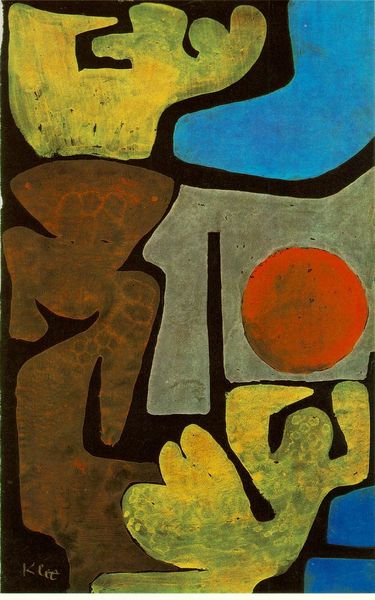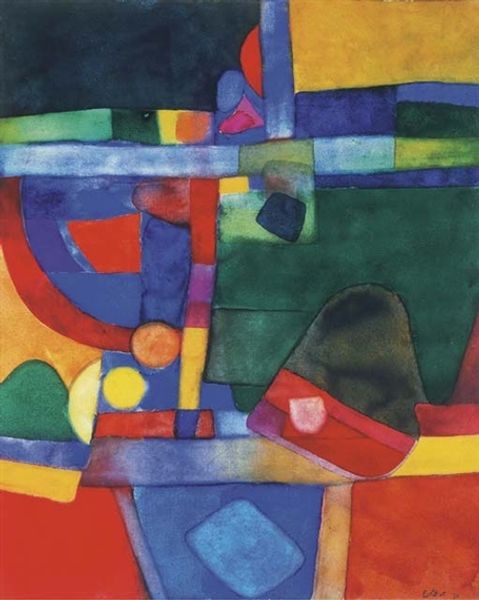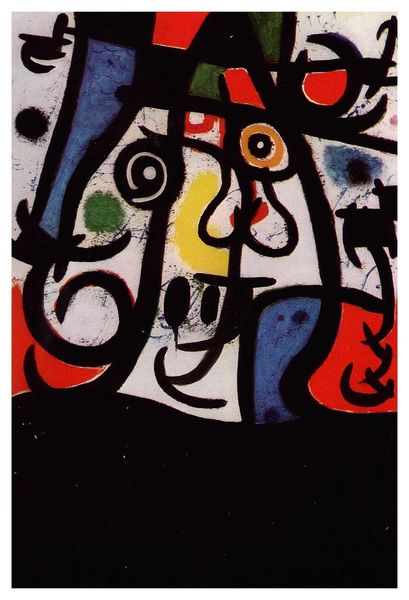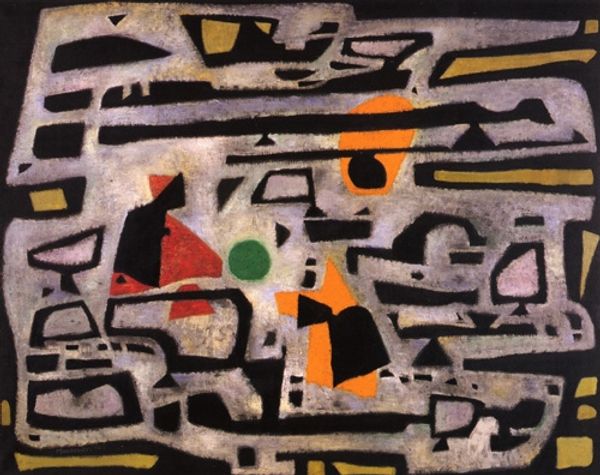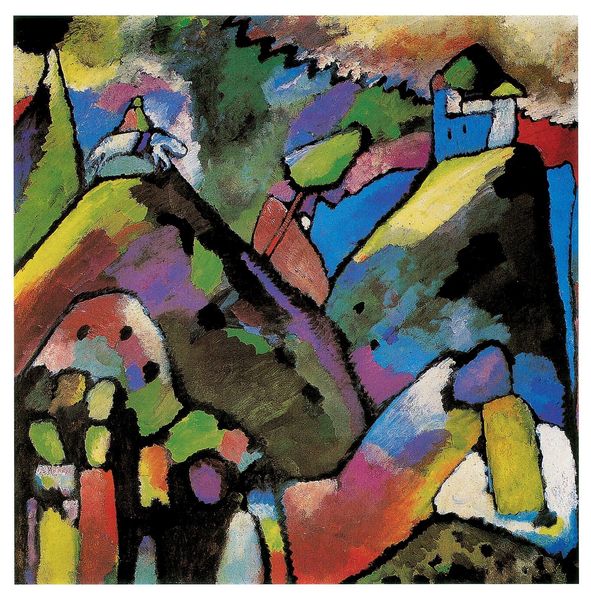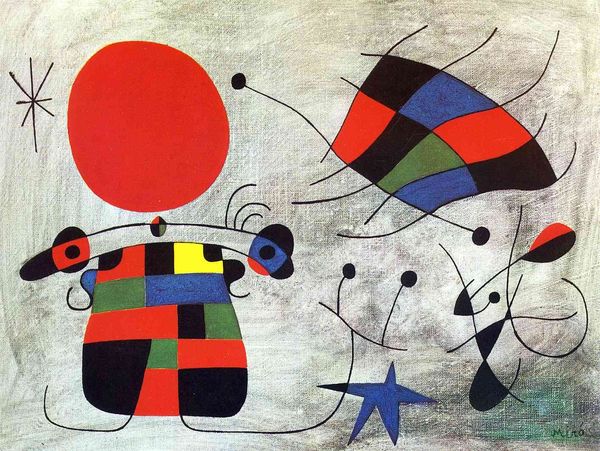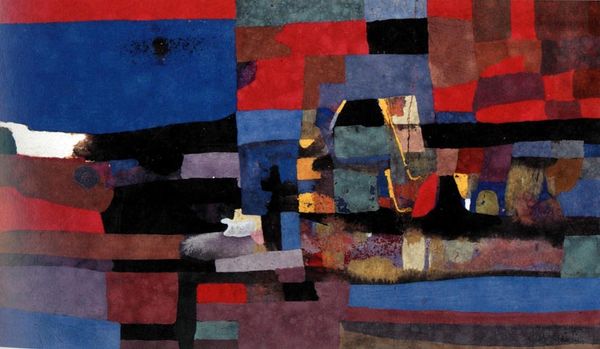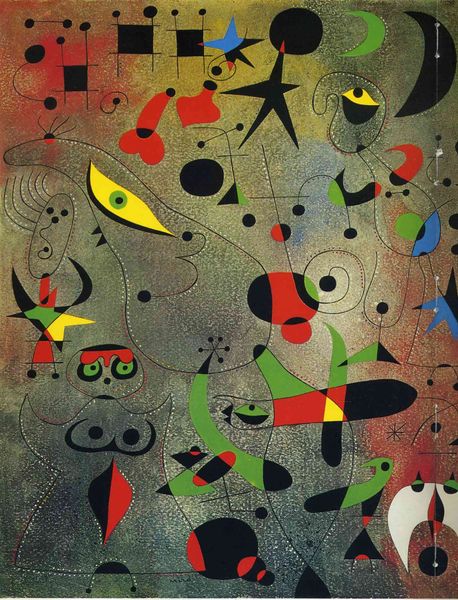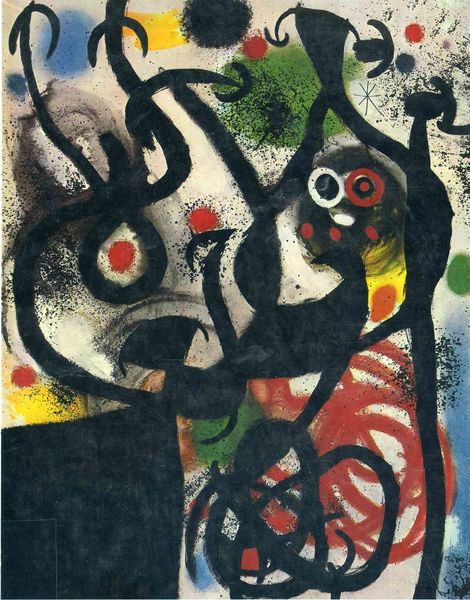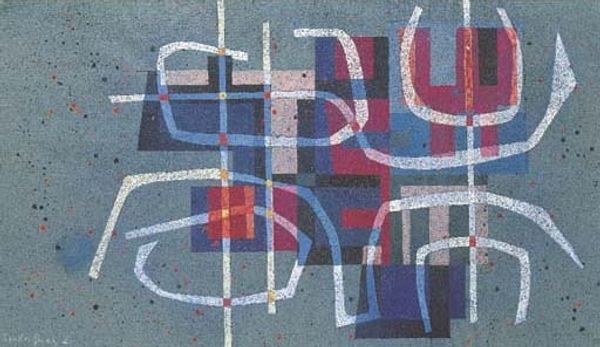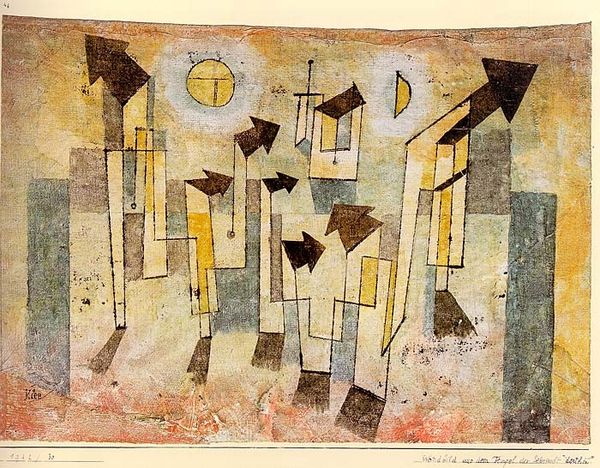
mixed-media, painting
#
mixed-media
#
organic
#
popart
#
painting
#
pop art
#
figuration
#
geometric
#
abstraction
#
surrealism
#
modernism
Copyright: Joan Miro,Fair Use
Editor: Today we’re looking at "The Skiing Lesson," a mixed-media piece by Joan Miró from 1966. It’s playful, almost like a child’s drawing, but also feels very intentional. What do you see in this piece, something seemingly so simple? Curator: Simple? I see a powerful statement about the deconstruction of form and the rejection of traditional artistic constraints after the World Wars. Miró lived through immense political upheaval; consider how this period’s artistic output served as a critique against fascism. Do you see echoes of that sentiment here? Editor: I can see that. The basic shapes, maybe they are stripping things down to their essence after such a destructive period. Like rebuilding, but with new, more basic components. Curator: Exactly. It’s not just about rebuilding, but reimagining. Miró often used automatism, letting his subconscious guide his hand, almost like a rebellion against the established order and hyper-rationality. Does that connect with your understanding of surrealism? Editor: It does! I see how it connects with Surrealism. He’s expressing inner feelings and using a visual language that rejects straightforward representation. So the "skiing lesson" is less about actual skiing and more about... Curator: More about the freedom of expression, the liberation from societal norms. Consider too, the use of colour - the bold reds and blues popping against the muted background - how might that be read as a push against artistic conservatism? How does the context inform this choice of palette, do you think? Editor: Maybe the colours symbolize a vibrant future. Thinking about it that way brings so much more depth to what I originally saw as a "simple" piece. Curator: Precisely! It invites us to question, to explore, and to challenge our preconceived notions of art and its role in society. I believe Miró’s lasting power comes from how deeply he engaged with the socio-political currents of his time, a visual dialogue still relevant today. Editor: That definitely shifts my perspective. I'll never see Miró's art as childish again; it’s incredibly profound. Curator: Good, it is a starting point for questioning the dominant ideologies that dictate our aesthetic preferences, for looking beneath the surface.
Comments
No comments
Be the first to comment and join the conversation on the ultimate creative platform.
